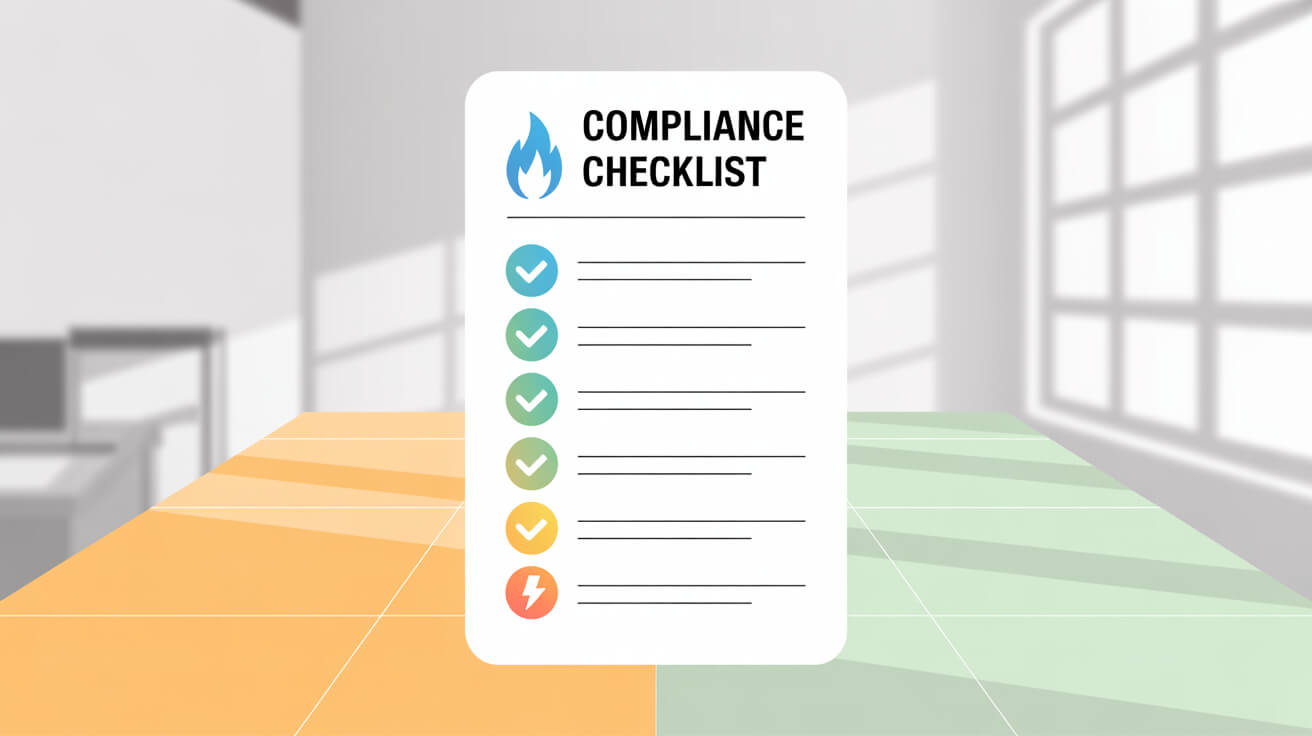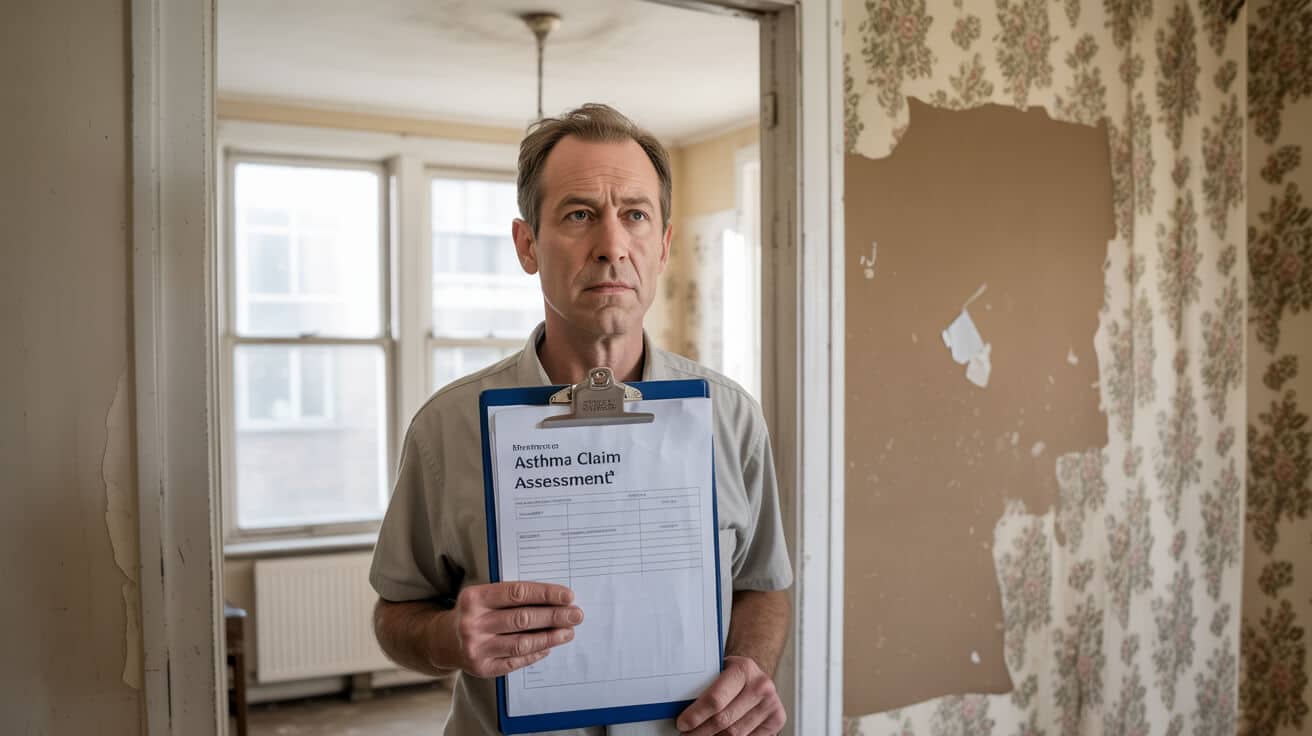 How Non Compliant Property Maintenance Can Void Your Insurance And Lead To Fines
How Non Compliant Property Maintenance Can Void Your Insurance And Lead To Fines

Could a Simple Oversight Void Your Property’s Insurance—and Trigger Fines?
It’s not always fires, floods, or structural failures that put a dent in your property’s future. Over and over, UK property owners who believe they have “done everything right” end up in a financial hole—all because of a missing certificate or overlooked logbook entry. Insurers and councils aren’t swayed by hard work or good faith when the evidence falls short. That means one absent gas safety check, a single expired EICR, or even a “DIY” fix left off your record could be the line between security and a five-digit payout refusal.
The insurance claim rarely unravels at the accident scene—it falls apart at the paperwork check.
A growing number of claims are denied outright, while councils issue escalating fines for non-compliance—even if the property looks freshly maintained. Legal protections depend not on intent but on traceable, up-to-date records. With digital enforcement and random audits on the rise, guessing or trusting memory (or a “mate’s word”) is a risk no owner can afford. This deep dive reveals the routine gaps that can quietly destroy your policy protections and revenue base, showing you the modern route to airtight compliance and property resilience.
What Hidden Safety Documents Are Insurers and Councils Actually Checking?

You can keep your building spotless and your tenants happy, but a missed certificate isn’t dismissed as an honest error. Instead, it’s treated as grounds for invalid insurance and a magnet for legal action. The must-have list is bigger, and more strictly enforced, than most owners realise: annual Gas Safety (CP12), five-yearly EICR, confirmed smoke and CO alarm instals, fire risk assessments for HMOs, legionella checks, asbestos records, and more—sometimes with local licencing on top.
What’s at stake when something slips?
A single missing Gas Safety or EICR can mean fines starting at £6,000 and running upwards of £30,000 per missing or expired document—often per property, or even per breach, not just per landlord (witansolicitors.co.uk). That’s before the knock-on pain: insurance instantly “reserved rights,” tenant lawsuits, and a legal brick wall if you ever need to regain possession. And for landlords, failing to serve tenants with the right certificates before move-in can make any future eviction completely impossible.
How to lock the compliance door before fines arrive:
- Digitally log every certificate and renewal: —don’t rely on paper piles or calendar reminders.
- Bundle annual safety visits: —synchronise boiler, electrics, and alarms on a one-visit system.
- Only accept digital certificates from accredited engineers: —no exceptions, no backdating.
Floating along on good intentions or “it’s being sorted” is giving way to the digital audit era—where if the record isn’t ready on demand, your protections might as well not exist.
A one-day gap in your gas or electrical certificate is all it takes to go from compliant to exposed.
How Do Documentation Gaps Turn Routine Claims Into Expensive Nightmares?

Insurance companies speak the language of risk. Every policy, however generous the small print seems, is written on the assumption that “every reasonable measure” is taken to keep up with basic repairs and safety. That means if a claim is filed and records are missing, informal, or DIY in nature, the fallback is almost always denial—followed by a battle you’re unlikely to win.
Why do valid repairs get denied anyway?
“Failure to maintain” headlines most rejection letters for building and liability claims (fyberly.com). Uncertified repairs, irregular logs, and lack of receipts give insurers the out they’re searching for. A water leak left unchecked, a faulty alarm not tested on schedule, a boiler once fixed by a ‘handyman’ instead of a registered engineer—all these are ammunition for insurers to void payouts. Owners paying premiums for years are left funding repairs themselves, facing lost rent, and sometimes fighting legal action from tenants or local authorities.
Ignorable maintenance gaps are silent liabilities:
- Records for boilers, fire doors, alarms, and electric systems are patchy or unsigned.
- Logs are occasional, hand-scribbled, or stored only in someone’s email cloud.
- Any “mate’s rates” job is trusted but never documented—especially if no official receipt or certificate is issued.
- “It looked fine” issues (slow leaks, drained batteries, jammed smoke detectors) are left with no digital timestamp or follow-up.
Today’s property insurance is proactive and expects diligence to be demonstrated, not implied.
Every missed log entry is tomorrow’s disputed payout—cover is only as strong as your slowest, least-logged task.
Which Everyday Repairs Put Your Insurance and Legal Position on the Line?

The big disasters may keep you up at night—but it’s the ignored “little things” that breed the silent disasters your insurance won’t cover. Blocked gutters, a missed drain clean, an out-of-date trip test on an RCD, a fire door that doesn’t self-close—these are cited in thousands of claim denials and council warning letters every year.
What actually triggers rejection?
Most often, it’s when the logbook fails to match up with the storey. Missed photo evidence of a broken roof tile gets a mould claim thrown out (cannins.co.uk). A fire alarm’s dead battery wipes out liability cover even if the fault had no impact on the losses. Uncertified electrical rewiring is grounds for blanket nullification of buildings insurance—and makes the property unlettable in many cases.
Unseen everyday threats to your insurance:
- Minor repairs and quick fixes—especially when left unlogged or without independent sign-off.
- Patch jobs on electrics or water systems after hours, never inspected or entered in a verified schedule.
- Assumptions that “the next visit will pick it up,” allowing small, compounding risks to build.
Proving diligence after the fact is almost impossible. No documentation, no payout—no matter how genuine the loss, and no matter how spotless the rest of your property record.
Insurance and compliance failures usually start with the everyday repairs that slip between the cracks.
Can a Single Compliance Miss Cost You Legal Control Over Your Property?

Ignorance is no defence when it comes to property law and tenant safety. It only takes one missing or expired certificate, especially on gas or electrics, to strip away your rights as an owner or landlord. Spot checks are up; council fines have more bite; and with eviction laws ever-tightening, missing records mean you may never be able to regain control—no matter how pressing the need.
Real-life compliance gaps threaten more than just your cash.
Council prosecutions and withheld tenancies have doubled in recent years (upkeepone.co.uk). Some landlords discover only in the courtroom that a single unsigned or outdated certificate removes the ability to serve Section 21 notices—or that insurance was officially null all along. Fines into five figures are just the start; criminal prosecution for negligence is increasingly on the table, especially where tenants or the public are put at risk.
Fastest ways to lose your legal shield:
- Letting a single certificate lapse into the “pending” pile—especially during busy season changes or tenant switches.
- Using non-accredited contractors and hoping their paper receipt is enough.
- Failing to run a pre-listing or pre-renewal audit, leaving small gaps for months at a time.
What you “don’t know” now can cost you the one thing you count on most: authority over your own property asset.
Legal rights vanish the second your documentation does. In property, there’s no such thing as an innocent gap.
Is Digital Proof Now a Dealbreaker for Claims and Inspections?

The old system of paper folders, boxes of receipts, and “my electrician has it on file” isn’t just clunky—it’s now the number one reason claims and compliance checks fail. Insurers, councils, and courts expect real-time, tamper-proof, digital logs. If you can’t email or screenshot a complete, timestamped record on demand, you’re already behind.
Why are digital records the new gold standard?
When disaster strikes—or when an audit lands without warning—reviewers move at internet speed. Faded paper, missing pages, or locally stored files that can’t be retrieved instantly are grounds for instant rejection (residentsline.co.uk). Even flawless work means nothing if the audit trail doesn’t exist in digital form. A lost PDF, a gap in the chain, or a missed time stamp undoes months of good work.
How to make your digital record bulletproof:
- Digitise every historic and new document; ensure indexes are tagged for easy retrieval.
- Use modern maintenance platforms that automatically log jobs with time, tech, and detail.
- Keep redundant cloud and physical backups—never leave your only copy on one device or with one person.
Your digital track record isn’t just backup; it’s the new gatekeeper for access to insurance and legal protection.
If your compliance isn’t visible on the screen, it doesn’t exist. Digital logs turn risk into protection.
Could a Multi-Trade, One-Partner Approach Help You Bypass Future Risks Entirely?

Property owners juggling multiple contractors, schedules, and paper trails are running through a field of traps. The biggest risk is not just the occasional missed job—but the fragmentation of records, communication, and accountability. Integrating all tasks under a single, multi-accredited property service partner (like All Services 4U) cuts risk at the root.
Why does one-partner property care work?
When everything runs through one system—digital job logs, notifications, service bookings, compliance reminders—there are fewer moving pieces to lose, forget, or overlap. You gain a unified audit trail; issues are flagged and fixed fast; renewals and follow-ups happen automatically. Council and insurance data show that properties run this way are least likely to receive fines or denials; most disputes are resolved in a single email (tmtinsurance.com). When in doubt, your provider produces click-perfect proof—no scrambling.
Advantages of a “single-hub” maintenance partner:
- All-in-one compliance and repair: less admin, no dropped certificates, no confusion over records.
- Pro-level accreditations (e.g., Gas Safe, NICEIC) across all major trades.
- Direct, always-on digital access to every document and booking—ready for council, tenant, or insurer at a moment’s notice.
Piecemeal contractors might seem cost-effective but usually leave you piecing together the audit trail when it matters. One contact, one log, one chain of evidence is the new standard of safety and peace of mind.
A joined-up partner covers the cracks you never saw forming—before the audit or emergency exposes them.
If You Audit Like an Insurer—Can You Stop Insurance Gaps in Their Tracks?

No property owner wants to be in the position of finding a missing log when the inspector or claims adjuster is standing in the hall. But that’s how most oversights come to light—too late to fix, and just in time for a denial or fine. Routine, scheduled self-auditing is the only guaranteed defence: it’s how professionals stay in front of risk and flip the insurance script.
Why regular audits change everything:
Modern councils and insurers expect “continuous compliance,” not “hope for the best.” Owners using quarterly or event-driven audits (at renewals, tenant turnovers, season shifts) see certificate lapses, unsigned jobs, or slow-evolving damage long before it grows costly (directlinegroup.co.uk). Self-auditing builds a live, fixable to-do list, giving you control—so inspectors, adjusters, or tenants never have the chance to find a gap first.
Practical audit routine to bulletproof your records:
- Book quarterly (minimum) digital health checks; tie to rent or insurance cycles.
- Use compliance checklists that flag expiring, unsigned, or missing documents instantly.
- Maintain cloud copies and a hard backup; redundancy beats hard luck every time.
While your competitors panic at renewal or inspection, you make risk readiness your routine advantage.
In property, audit readiness is stronger than insurance—it’s what gives every policy teeth.
Why All Services 4U Is the Modern Partner for End-to-End Compliance and Total Peace of Mind
Legal threats, insurance denials, frantic last-minute chases for missing logs—none of these belong in a modern property owner’s playbook. All Services 4U exists to erase these risks at the source. With a multi-accredited, single-hub solution covering every trade, digital log, and certificate, we shield your property from the things you can’t see coming.
What you gain when you let the experts handle documentation:
With All Services 4U, every maintenance task, safety check, and reactive fix is logged and certified in a unified, digital system. You get scheduled reminders, instant document retrieval, and access to a support team attuned to every shift in compliance law. Inspections? Claims? Evictions? You’re audit-ready at every turn. Landlords, facilities managers, and property companies across the UK trust us because we don’t just patch up problems—we future-proof your asset, reputation, and livelihood (thebla.co.uk).
Ready to vault your properties to a future-proof, compliance-secure standard?
- Book an expert assessment now—find and fix hidden risks before they cost you.
- Centralise every maintenance, compliance, and repair record under one digital roof—no more paperwork hunts.
- Transform your approach to risk—from a scramble to a strength. The best time to make this change is before you need to prove a thing.
Your property’s future isn’t just in bricks and mortar. It’s in the records, accreditations, and readiness you can prove—on demand, every time.
Frequently Asked Questions
Why do small property maintenance oversights still endanger insurance—or trigger claim rejections—despite regular upkeep?
Even owners who pride themselves on routine care can find their insurance claim refused over details that feel minor: a forgotten gutter clean, a poorly logged repair, or a “quick fix” by an unqualified contractor. In today’s data-driven claims environment, insurers scrutinise not just the incident, but your process. If a task appears overdue, a certificate is missing, or repairs lack proof of credentials, you risk being accused of neglect—even if you believe you’re on top of things. UK insurers often require digital photo evidence, engineer IDs, and a traceable service history for every claimed event; any ambiguity or gap flips the burden of proof back onto you. Disputes over “preventable” versus “fortuitous” losses hinge on your documentation being both complete and instantly retrievable.
Negligence in the eyes of insurers isn’t about intent—it’s about proven, logged, and timely action.
Which routine maintenance gaps now carry the highest risk for owner-occupiers, landlords, or managing agents?
- Missed biannual gutter or roof checks: Insurers increasingly blame untreated ingress on maintenance failure, not storm events.
- DIY electrical or plumbing work: If not Part P, Gas Safe, or NICEIC certified, expect claim challenges.
- Delayed log updates or unfiled certificates: A week’s gap can be interpreted as systemic neglect if a loss occurs during the window.
- Unresolved damp, leaks, or small cracks: Unattended minor faults act as red flags in later fire/flood/property claims.
- Partial, paper-only record-keeping: Scattered or inconsistent maintenance logs undermine your whole compliance narrative.
Owners who embrace all-in-one digital maintenance tracking—storing photos, certificates, invoices, and engineer details in one portal—equip themselves with the audit-ready trail that insurers demand, slashing rejection odds and speeding up approvals.
How can a single overdue safety or compliance inspection trigger fines, invalidate landlord rights, and freeze insurance claims?
Recent UK case law and council enforcement actions show that missing a mandatory inspection—like EICR, Gas Safety, or fire door checks—even by just a few days empowers authorities to escalate fines, block evictions, and gives insurers instant grounds to reject claims. “Continuous compliance” is not just a phrase in new legislation, but a practical standard—landlords are fined up to £30,000 per EICR breach, and even homeowners risk losing cover for gas or fire events if there’s a certificate gap on the record. Certain leasehold blocks and managing agents now demand evidence of advanced renewals and digital proof, not just a physical certificate pinned to the fuseboard.
One missed certificate undermines years of careful management—because the law now values continuity over intent.
What immediate consequences do landlords and property owners face for inspection delays or document gaps?
- Instant penalty notices: for EICR or gas safety lapses; even ongoing applications for renewal don’t shield from fines.
- Eviction embargoes: Section 21 proceedings are frozen if compliance isn’t provable on the date notice is served.
- Insurance nullification: A fire or leak during a gap is often classed as “unprotected,” leaving you to absorb the full loss.
- Legal exposure: Prosecution is more likely for repeat or “wilful” offenders, especially those lacking digital logs.
- Tenant injury claims: Civil suits find it easier to succeed when regulatory records are scant or unclear.
Platforms like All Services 4U automate reminders, coordinate timely bookings, and log every certificate in your property’s secure digital ledger—so compliance failures never come down to admin error or memory lapses.
What forms of digital evidence are councils and insurers demanding during compliance audits or claims review?
The new expectation in property risk management is “forensic traceability”—not just that work was done, but exactly when, by whom, and with what supporting credentials. Traditional maintenance diaries or “I’ll get the paperwork” doesn’t suffice. Adjusters, council officers, and letting agents are empowered to request remote, time-stamped digital proofs: PDFs of every statutory certificate, before-and-after photos, job logs matching engineer IDs to professional bodies, and automated renewal records. If any record is missing, misdated, or can’t be mapped to an accredited contractor, audits freeze and claims face rejection nearly by default.
Digital silence is presumed guilty: a missing log is seen as a missing action, not an innocent omission.
What are the essential records and validation checks for a smooth audit or claim?
- Time-stamped digital certificates: For gas, electric, EPC—each cross-checked with government databases and engineer registers.
- Chain-linked photo evidence: Capturing the original issue, repair process, and completed work—all tagged by date and property area.
- Contractor qualification logs: Proof that every intervention was by a competent, accredited professional.
- Automated renewal and reminder logs: Showing proactive not reactive risk management.
- Cloud-based audit trail: Facilitates multi-stakeholder access (owner, agent, insurer, council) and avoids delays from misplaced files.
By consolidating documentation and evidential workflows into a single, secure dashboard—All Services 4U helps owners and managers pass audits or respond to incidents with speed, certainty, and trustworthiness.
Which UK building regulations most frequently trigger fines or cause insurance refusal—and why are councils so aggressive about enforcement now?
The tightening of building laws and “zero tolerance” policy in health, safety, and energy standards has created a compliance minefield. In the past 18 months, councils and insurers have intensified enforcement around Gas Safety (annual CP12), Electrical Installation (EICR), HMO licencing, EPC minimum ratings, and the HHSRS matrix (mould, damp, trip hazards). Digital council dashboards now flag properties for auto-inspection upon complaint or certificate expiry, and cross-agency data sharing means letting a certificate lapse is instantly visible to insurers and even mortgage lenders. Many HMO owners face surprise dawn inspections, and increasingly, letting agents refuse to take on new clients without digital compliance assurance.
One compliance failure is all it takes for insurers and councils to join forces—making you responsible for everyone’s risk.
Which compliance gaps are most heavily penalised under the latest council and insurance protocols?
- Missing or invalid Gas Safe or EICR certificates: Near-certain fines, immediate insurance restriction, criminal prosecution in severe cases.
- Absence or incorrect fitting of smoke/CO detectors: Fines per device and insurance policy exclusions.
- Poor HHSRS scores: Failing to address recorded hazards (including damp, mould, trip/fall risks) triggers council orders and short-term policy bans.
- Operating unlicensed HMOs: Prosecution, backdating of taxes and insurance losses, and tenant reimbursement orders.
- EPCs below minimum Band E: Breach incurs fines, blocks letting/renewal, and raises mortgage viability issues.
Comprehensive, real-time compliance audit trails—using digital portals like All Services 4U—provide the transparency and reliability that councils and insurers now mandate, protecting your licence, cashflow, and tenant relationships.
How do you build a digital compliance and maintenance record that will stand up to even the toughest council or insurance scrutiny?
Building a defence-grade digital file isn’t just about uploading certificates—it’s about real-time, date-stamped logs that tie every service, emergency, and inspection to an objective point in time and a qualified name. The more “live” and tamper-evident your record, the less argument during a dispute. High-trust records now require secure PDFs, photo logs with location and time data, direct mappings to engineer IDs, and automated reminders for every statutory deadline. Relying on spreadsheets or email attachments no longer meets third-party validation standards.
Your audit trail should shout: this asset is managed—by professionals, with proof, at every turn.
What technological features or workflows make your records truly audit-proof?
- Instant QR-verifiable certificates: Scannable links direct to authoritative databases.
- Location-tagged repair photos: Confirms the “where” alongside the “when.”
- Live contractor database: Validates right to work and up-to-date accreditations.
- Lock-protected logs: Each update date-stamped and linked to responsible personnel.
- Redundancy and backup: Secure, cloud-based storage prevents loss from device failure or staff turnover.
All Services 4U’s end-to-end solutions let property teams and owners document every fix and check with absolute clarity—supporting a culture of preventive, not just reactive, care.
What recurring mistakes keep causing claims or compliance failures, and how can switching to a coordinated service like All Services 4U change the outcome?
Despite stricter standards and digital tools, property professionals repeat familiar stumbles: letting certificates lapse by days, thinking a temporary fix is “good enough,” filing documents in inconsistent ways, or not vetting every contractor for updated credentials. Such lapses were once invisible—but now, every insurer and council cross-checks your history at renewal time or after an incident. Even a minor missing document can snowball: a tenant’s complaint can trigger a council deep-dive, which then exposes an insurance breach. All-in-one maintenance services break this cycle by offering a single source of truth—automatic reminders, QR-confirmed documentation, accredited contractor assurance, and cloud-based proof all in real time.
Consistent documentation isn’t admin—it’s your best defence, and the fastest route to peace of mind.
How does an integrated maintenance partner transform risk into reliability?
- Unified admin portal: Every document, visit, and certificate kept in sync, automatically accessible for audits or disputes.
- Real-time escalation alerts: Miss a deadline or flag a compliance issue, and the system intervenes before exposure.
- Exclusive use of accredited trades: Ensures every job builds your compliance and insurance profile.
- Customisable, one-click audit reports: Instantly downloadable, so you respond with confidence to any challenge.
- Continuous cloud sync: Critical proofs protected against device loss, file deletion, or staff turnover—always available on demand.
Migrating your routine and emergency management to a coordinated digital platform like All Services 4U marks you and your properties out as leaders in compliant, future-ready asset stewardship—building resilience, reputational value, and cashflow security with every logged maintenance action.



